- Federal Ministry of Education and Research (BMBF) project QSolid - Quantum computers in the solid state
- Federal Ministry of Education and Research (BMBF) project PhoQuant - Photonic quantum computers
- Federal Ministry of Education and Research (BMBF) project SPINNING - Spin-photon-based quantum computer on a diamond basis
- Federal Ministry of Education and Research (BMBF) project CoGeQ - Competitive German Quantum Computer
- Federal Ministry of Education and Research (BMBF) project DiaQNOS - Quantum Sensing Methods for Neurosurgery
- Federal Ministry of Education and Research (BMBF) project Q-SiCk - Integrated photonics for scalable and CMOS-compatible quantum technologies in silicon carbide
- Federal Ministry of Education and Research (BMBF) project DE-BRILL - German Brilliance: Manufacturing process and novel control techniques for diamond quantum computers
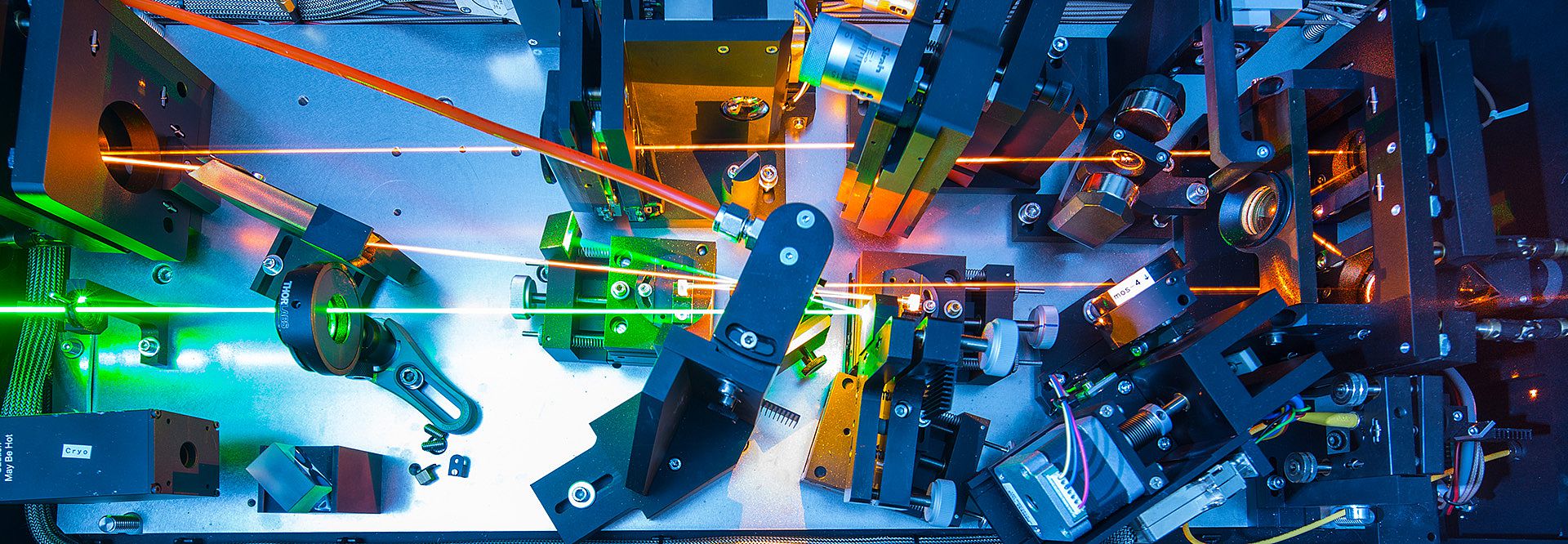
Quantum Science and Technology
The laws of quantum mechanics open up completely new horizons for the development of future technologies. Whether in medical imaging, quantum computing, satellite navigation or information encryption and data security – the fields of application at Ulm University are diverse and the potential for innovation is enormous.
Ulm University – pioneer and partner in quantum research
In the birthplace of Albert Einstein, Ulm University, as a pioneer in quantum research, is working together with research institutions and partners from industry to open up the quantum world for the future. Our researchers are among the world's leading minds in the field of quantum physics. They are working at the highest level to understand and control quantum systems and to utilise their physical properties for new applications.
Three locations, one Cluster of Excellence application
The three locations Karlsruhe, Ulm and Stuttgart combine globally unique expertise in the field of quantum science. The Karlsruhe Institute of Technology, Ulm University and the University of Stuttgart have jointly submitted the “Chem4Quant” proposal in the current round of calls for a “Cluster of Excellence” in the German federal and state governments' Excellence Strategy. Even though the application was not successful in this round, it highlights the excellent research achievements of the scientists involved in recent years and provides important impulses for future developments in quantum technologies.
Draft proposal "Chem4Quant"
In this joint project, an interdisciplinary team from the areas of chemistry, physics, computer science and materials science is seeking to develop atomically precise material structures to be used in future quantum technologies such as the quantum internet. The centrepiece of the proposal is a chemical platform that will be used to plan and construct qubit materials in a targeted manner.
The aim of the project is to develop atomically precise quantum architectures that are chemically tailored to specific quantum technological requirements. If the proposal is successful will be announced at the end of May 2025.
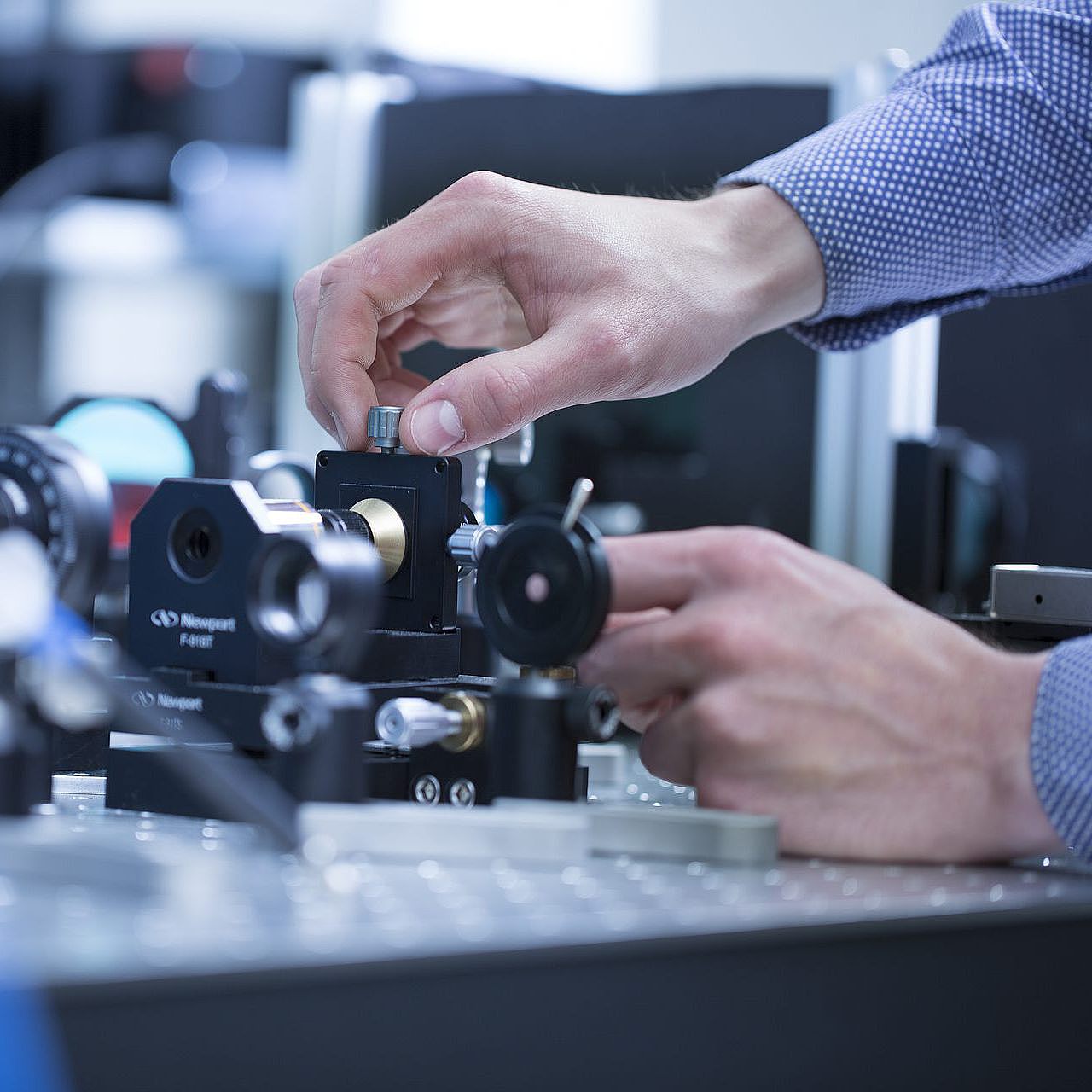
Our quantum research at a glance
Ulm University is one of the world's leading centres for quantum research. With its interdisciplinary orientation and world-class research at the interface of Physics, Engineering, Information and Life Sciences, it contributes significantly to the development of novel quantum technologies.
These activities are supported by a broadly diversified ecosystem that includes non-university research institutions such as DLR institutes, start-ups and high-tech companies in addition to the University. The Center for Integrated Quantum Science and Technology (IQST) bundles the expertise with the locations in Stuttgart and at KIT. Finally, Ulm is a key partner in national and international alliances, as well as in the state-wide QuantumBW innovation campus.
Quantum research at a top level
The IQST is one of the world's leading centers for quantum technologies. It was founded in 2014 by the Universities of Ulm and Stuttgart and the Max Planck Institute for Solid State Research, with KIT joining in 2024. The mission of this unique alliance in Germany is to research the fundamental properties of complex quantum systems, which are made up of the basic constituents of matter such as atoms, photons and electrons, across disciplinary boundaries. Scientists from the fields of physics, materials science and engineering as well as the information and life sciences conduct research at the IQST.
At the ZQB, more than 100 scientists conduct research at the interface of quantum and life sciences. With the help of quantum-based technologies, high-performance sensors for medical imaging are being developed to observe metabolic processes in real time at the atomic level; a huge step forward for biomedical research and diagnostics. The ZQB also investigates quantum physical processes in biological systems.
A great example of successful technology transfer at the interface of quantum and life sciences is the start-up NVision, which was founded at the university in 2015 and has emerged from the university as well as numerous other companies. The technology developed there makes it possible to use conventional magnetic resonance imaging devices for the visualization of metabolic processes in real time without major conversion effort.
With the help of quantum mechanical polarization effects, the image signals are forced in such a way that cellular processes become visible at a molecular level. This could lead to massive advances in the diagnosis and treatment of people with cancer in the future. NVision delivered the first “Polaris” device for basic research at the beginning of 2025, with the product line for clinical use set to follow at the end of the year.
The company was founded by Ulm quantum physicists Professor Martin Plenio and Professor Fedor Jelezko, Hebrew University of Jerusalem professor Alex Retzker and Dr. Ilai Schwartz. At the time of its foundation, Dr. Schwartz was a PhD student at the Institute for Theoretical Physics at Ulm University, while Professor Retzker was a postdoc at the university before moving to Jerusalem shortly afterwards.
Double funding for success
The quantum physicists Professor Martin Plenio and Professor Fedor Jelezko from Ulm have achieved an extraordinary success: They have received two ERC Synergy Grant from the European Research Council (ERC) – the European Union's most highly endowed funding format for outstanding, innovative and high-risk science.
Science at the highest level
Professor Martin Plenio and Professor Fedor Jelezko received the funding for the “BioQ” and “HyperQ” research projects: The first ERC Synergy Grant “BioQ”, endowed with 10.3 million euros, was approved in 2012. Co-applicant was the former Ulm chemist Professor Tanja Weil (Director at the Max Planck Institute for Polymer Research in Mainz since 2017). The second Synergy Grant, worth 9.4 million euros, followed in 2019 with the successful "HyperQ" application, in which Professor Jan-Hendrik Ardenkjær-Larsen from the Technical University of Denmark was involved. In 2015, another 5 million euros were added from the EU project “Hyperdiamond”.
The common goal of these three projects, which are based on each other, is to revolutionize nuclear magnetic resonance applications such as magnetic resonance imaging. A vision that has partially become reality: highly sensitive biosensors and ultra-sensitive imaging techniques make it possible to observe molecular processes in living cells at the atomic level in real time. The researchers are relying on quantum mechanical hyperpolarization effects in artificial diamonds.
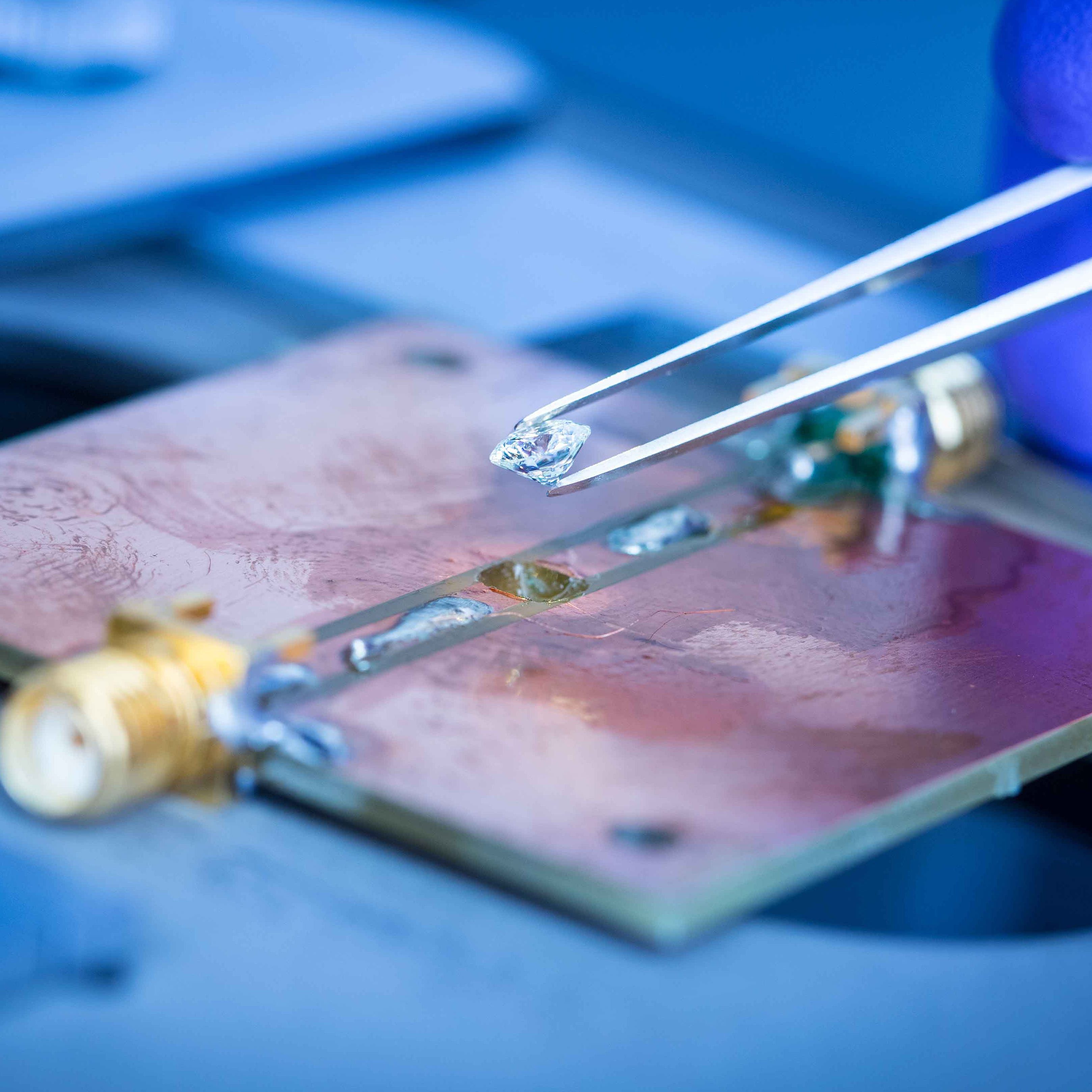
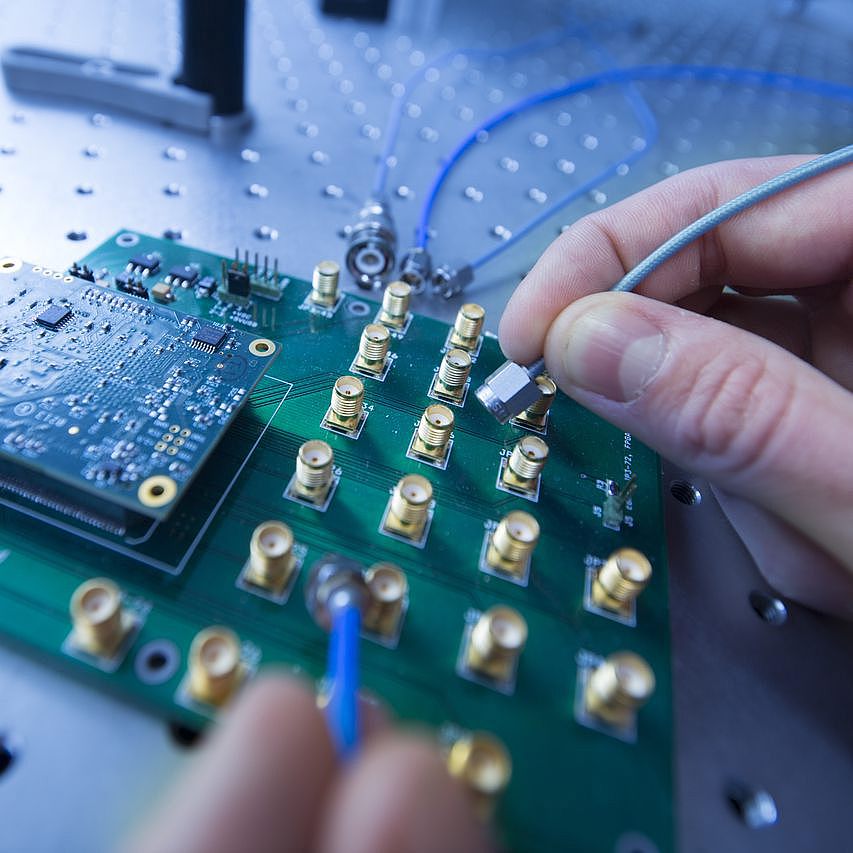
Competence network QTBW – Networking quantum technology in Baden-Württemberg
As network partners in the Baden-Württemberg Quantum Technology Competence Network (QTBW), our scientists are contributing significantly to establish Baden-Württemberg as a leading international hub for quantum technologies. Launched in 2019 and supported by the Baden-Württemberg Foundation, the QTBW network combines the expertise of leading research institutions in the region.
Excellence through collaboration
In the Quantum Technology research program (2019-2024), the BW Foundation provided five million euros in funding to focus on basic research into solid-state systems, particularly in the areas of high-precision measurement methods, imaging and secure data communication.
The QTBW network established within this framework will be continued and expanded in the follow-up program Quantum Sciences of Molecular Systems. The aim of the program is to research the potential of molecular quantum systems and strengthen the interfaces between quantum science and chemistry.
The Ministry of Science and the Arts (MWK) is also supporting QTBW with one million euros. An international guest and visitor program, regular network meetings and targeted support measures for young scientists strengthen interdisciplinary cooperation and the transfer of knowledge between research and industry.
Accelerating the use of quantum technology
From precise navigation and advanced imaging to powerful computers: our researchers are improving new technologies in quantum research and are focussing on close collaboration between science and industry. Together with reinforced partners, we are creating a network that brings research into practice faster.
QSens – Quantum sensors of the future
In the QSens future cluster of the University of Stuttgart and Ulm University, scientists, companies and start-ups are successfully researching innovative quantum sensors and their transfer into practice. These harbour promising potential for healthcare, the Internet of Things and renewable energies, for example. The Federal Ministry of Education and Research (BMBF) has been funding QSens as part of the Clusters4Future competition since 2021.
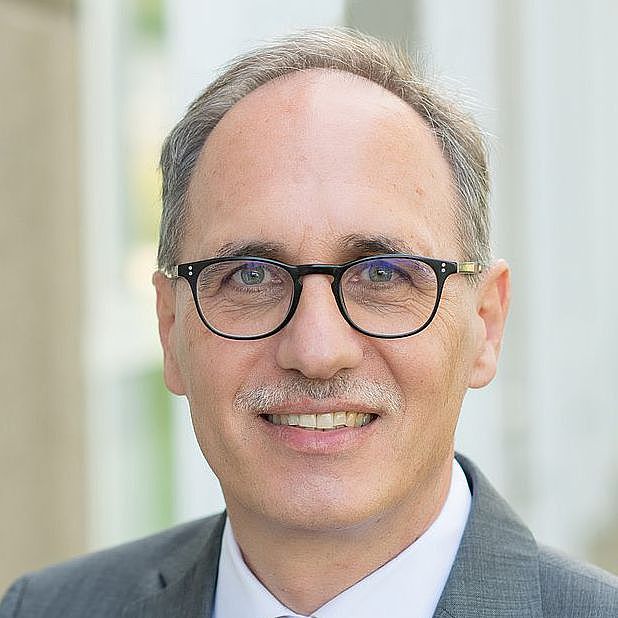
With QuantumBW, we want to take the final leap into the technology of the future.
Prof. Joachim Ankerhold
Institute of Complex Quantum Systems and QuantumBW spokeperson for science
QuantumBW – Quantum ecosystem for the technologies of the future
Ulm University is part of a dynamic quantum ecosystem that has developed in Baden-Württemberg. In order to reinforce this ecosystem and bring research in the field of quantum technology into use more quickly, the state of Baden-Württemberg launched the QuantumBW innovation offensive in spring 2023.
The innovation offensive QuantumBW
The aim of the QuantumBW innovation offensive is to network basic and applied research with industrial partners and to promote an intensive exchange between science and industry. “Based on an already internationally unique research landscape in the quantum sciences, we want to take the final leap into the technology of the future with QuantumBW,” says Professor Joachim Ankerhold, quantum physicist at Ulm University and QuantumBW spokesperson for science. The spokesperson for industry is Dr. Volkmar Denner, former CEO of BOSCH. The state of Baden-Württemberg is providing more than 31 million euros for the innovation platform from 2023 to 2027.
In addition to Ulm University, the network's first partners include the Universities of Stuttgart, Freiburg, Tübingen, Heidelberg and Constance, the Karlsruhe Institute of Technology, the German Aerospace Center, the Fraunhofer Society, the Max Planck Society, Carl Zeiss AG, Robert Bosch GmbH, the Mercedes-Benz Group and IBM Germany.
The Carl Zeiss Foundation Center for Quantum Photonics (QPhoton)
Two key technologies, one platform, anchored in Jena, Stuttgart and Ulm: the Carl Zeiss Foundation Centre for Quantum Photonics (QPhoton) is unique in Germany. Opened in 2022, the centre combines the disciplines of quantum technology and photonics at the three excellent research locations of Jena, Stuttgart and Ulm.
Unique centre for quantum photonics
In QPhoton, scientists from the universities of Jena, Stuttgart and Ulm are conducting interdisciplinary and cross-disciplinary research into the development of a new generation of quantum-based imaging, sensor and information technologies. The participating institutes are the Abbe Center of Photonics (University of Jena), ZAQuant (University of Stuttgart) and ZQB (Ulm University).
In cooperation with non-university partners, quantum-based basic research is put into practice. This involves highly sensitive sensor and imaging technologies as well as ultra-fast information processing, for example for quantum computers. QPhoton offers excellent research infrastructure at all three locations. This includes high-precision and laser laboratories as well as clean rooms and laboratories. The Carl Zeiss Foundation is funding the center with 12 million euros. The site spokesperson for Ulm is Professor Joachim Ankerhold, Head of the Institute for Complex Quantum Systems.

Into the future with quantum technologies: DLR-QT and the Quantum Computing Initiative in Ulm
The research landscape in Ulm's Science City makes a significant contribution to the further development of space travel. Through close cooperation with the German Aerospace Center (DLR), quantum technologies are being developed at the highest level that are revolutionising more than just space travel. The Institute of Quantum Technologies (DLR-QT), founded in 2018, and the DLR Quantum Computing Initiative (DLR-QCI) are pioneers in the field of quantum research and applications.
The dynamic growth of the quantum ecosystem in Ulm's city of science makes Ulm an attractive location for top researchers in this field and attracts talent and start-ups from all over Germany.
Quantum technologies for the space industry
DLR-QT focuses on various areas of quantum technology, including quantum metrology, quantum sensor technology, matter wave optics, miniaturized optical clocks and quantum information technology.
The high-performance technologies developed at the DRL-QT not only benefit the aerospace industry. The demand for instruments with ever higher resolution – for example for measuring position, time and acceleration – is also enormous on Earth. Second-generation quantum technologies, such as high-precision quantum clocks, ensure much more accurate positioning for GPS systems and satellite-based navigation.
The DRL-QT has around 11 million euros a year at its disposal for research, 90 percent of which is provided by the federal government and 10 percent by the state of Baden-Württemberg.
Quantum computers will play a central role in research, industry and business in the future. However, many developments are still needed before they can be fully used in practice. To promote this process, DLR has launched the Quantum Computing Initiative (QCI) in Ulm and Hamburg. The aim is to create a strong foundation for the development of quantum computers in Germany through close cooperation with industry, research institutions and start-ups.
Milestones in our quantum research
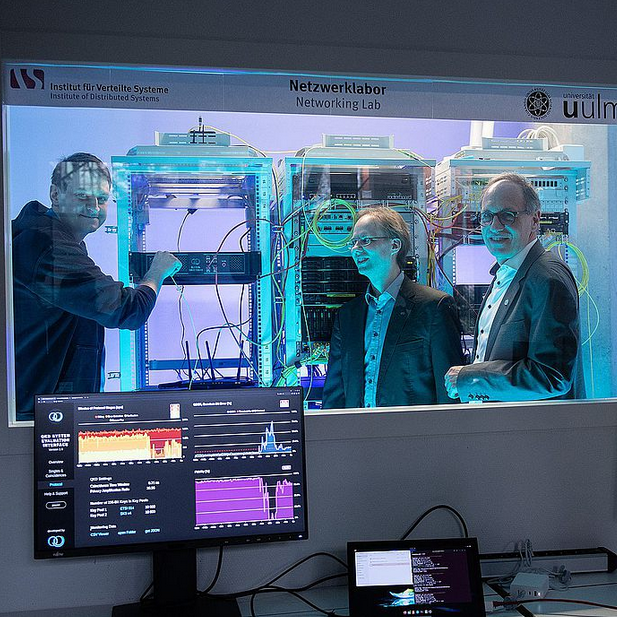
Highly sensitive information such as patient data or financial transactions must be protected against espionage. With the new quantum key distribution test track, Ulm University and DLR are researching tap-proof communication. This marks the beginning of a new era of quantum communication for the Science City and the region!
